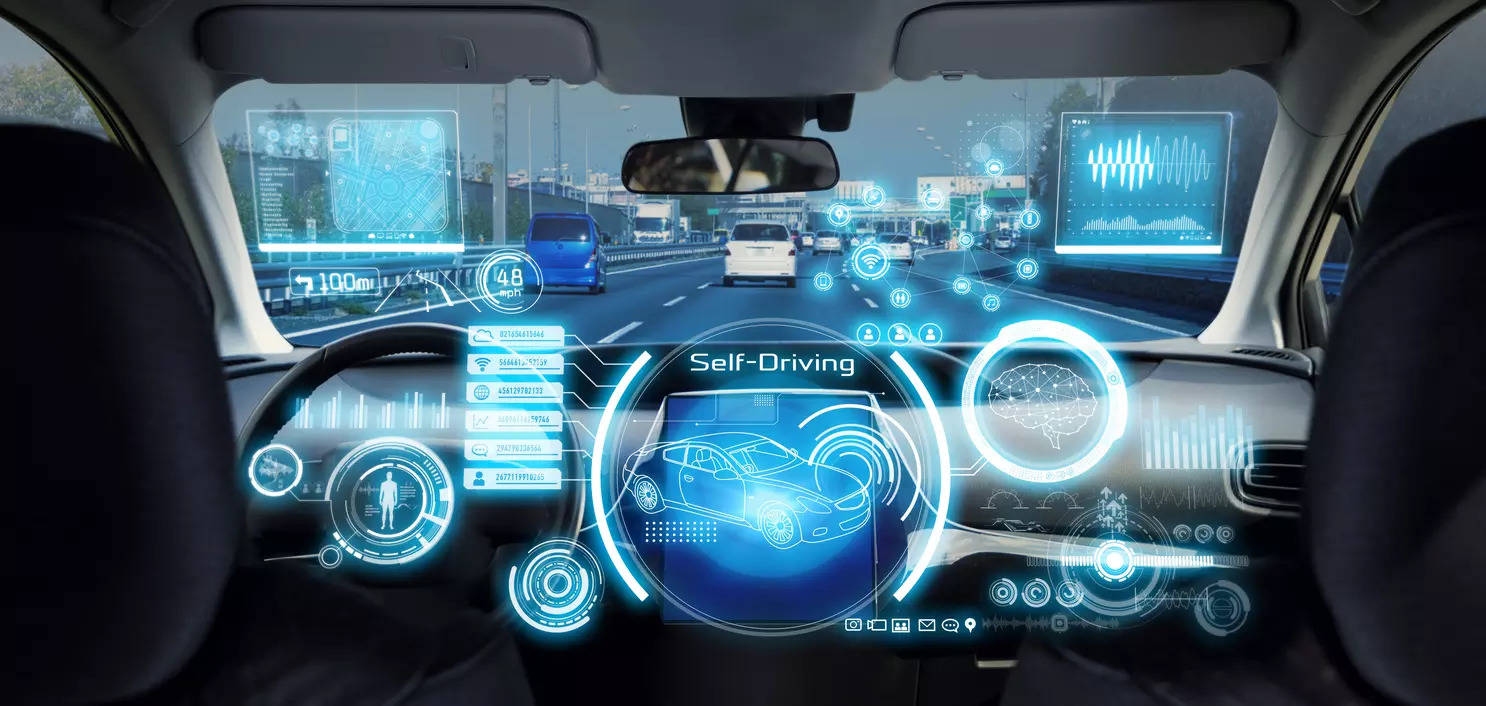
New Delhi: A few years ago, Autonomous Driving was seen as a major growth opportunity among the key megatrends to invest in, by both big and small players. The radical concept of cars driving on their own also attracted a lot of hype, and almost a competition to develop the required capabilities. However, things are heading in a different way for Autonomous Driving.
In the series of news which reflect that, technology company Aptiv’s (carved out of the earlier GM owned Delphi) stake reduction in its Autonomous Driving joint venture with Hyundai is the latest.
Late last month, the US auto safety regulators started investigating if Tesla’s biggest-ever recall of over 2 million vehicles to upgrade their ‘Autopilot’ feature is enough as there have been reports of multiple crashes, according to a Reuters report.
‘Autopilot’ is a key feature in Tesla vehicles which allows them to steer, accelerate, and brake automatically, while requiring the driver to remain alert. It’s a key step towards Tesla’s ambition to offer fully autonomous vehicles. The incidents in the US, involving GM’s Cruise and Waymo robotaxis have also triggered debates over autonomously driving cars globally too.
With the not-so-good developments, some organisations are putting Autonomous Driving technology plans on the backburner. Visteon is among them. “We are entering into a self autonomous driving winter. We’ll see how long it lasts before spring arrives, so we’re calibrating our investments in that area,” Sachin Lavande, CEO, Visteon told ETAuto in an interview earlier.
Visteon is focusing on opportunities that it sees are “more near term”, and that includes ADAS, its youngest business line, where the company has invested over USD 100 million.
In the new-age industry many Tier 1 suppliers have repositioned themselves as technology companies, as they and many smaller players are providing some crucial advanced technologies to OEMs to make the vehicles compete better. German major Continental is one among them. Its CTO, Gilles Mabire, is not surprised that Autonomous Driving is taking longer than expected in hitting the market, as the expectations may have also been built on comments made by industry leaders who may have been smitten by the hype.
“On the technical side, we all knew that to cover the complex use cases, or corner cases and material solutions it is going to take time. But we had seen in communications, very optimistic talks, where everyone expected things to be solved in a couple of years,” he said in a recent episode of ETAuto’s Technology Talks. Mabire, and many other engineers like him, would prefer to advance “step by step” in the Autonomous Driving technology development journey as “it’s a matter of identity. It’s a market of reputation, and we are not willing to take any shortcut if they do not create a safe solution”. The incidents involving self-driving cab service providers Waymo and Cruise’s vehicles highlight the impact on reputation, and impression that Autonomous Driving technology may have irrespective of the car brand involved.
Gilles is “convinced” though that by 2028 Continental will be among the first to offer technology, with American partner Aurora Innovation, for fully autonomous driving trucks. .
The geopolitical hurdle
Autonomous Driving’s longer than expected technology development may also be because of reasons other than the technological challenges. It’s believed that geo-political issues may also be posing a challenge. A few days ago, South Korea has reportedly raised its automotive industry’s concerns with USA over the latter’s inquiry and envisioned rules for addressing potential security risks from connected vehicles with technology from China and ‘other countries of concern’
“China is not accessible to you (without passing an audit by local authorities). The US is saying that we will have to audit anything that has AI in it being sold to other countries, because they don’t want it to go to countries like Russia and Iran. So if I sell that technology here), and it ends up in Iran and Russia, then I’m on the hook,” says a global CEO of a Tier 1 supplier. And, this he adds, “is causing the entire industry to take a little bit of a pause” to find out the way forward for AI for AI based tech laden vehicles, and autonomous driving isn’t possible without AI.
The concern over the future business prospects is there as the industry will struggle for scale if the major markets of China, USA, Europe take different paths in terms of regulatory requirements. Then “who is the supplier that can survive in that environment?” says the industry leader cited above.
“It’s important that societies have this open minded approach (for advanced tech like autonomous driving). Nobody’s forced to use that technology. But if you put obstacles in the way that are legally or financially so massive that nobody will introduce the technology, that’s not a good thing,” Harald Kroeger, President – Automotive Business, SiMa.ai, and ex-Mercedes Benz, Bosch, Tesla, Rivian.
Autonomous Driving and India
Autonomous Driving is among the key megatrends discussed in India, but market rollout here could be a long time away, if at all. However, ADAS is a hot trend in the local market. For the component industry, it was estimated to be a USD 169 million market which is projected to be around USD 1 billion by FY28, according to CRISIL.
For Continental, its India technical centre is a CoE (Centre of Excellence) for Autonomous Driving technology. The team in Bengaluru has developed the Tier 1’s latest 6th generation radar, a key component in the Autonomous Driving tech stack, and is also working on autonomous parking solutions.
In the same city, a startup named Minus Zero showcased an autonomous vehicle Concept which runs on its ‘nature inspired’ camera-only and software tech. Minus Zero has joined hands with Ashok Leyland for a ‘long-term’ partnership to ‘revolutionise commercial trucking through the deployment of autonomous solutions at scale’.
There are a few other Indian startups, like RoshAI in Kochi, which are working on pushing the autonomous driving technology envelope. If they succeed in navigating their test cars in all possible driving environments in India, it’s quite likely that the solutions can be applicable anywhere in the world, with some modifications maybe.
More challenges?
As the discussion around Autonomous Driving tech’s challenges continues, a question also arises that even as the megatrend’s hype reduces, could there be some more pain on its journey ahead? “My guess is we’ll see a little bit more because of certain principles that were not followed by some companies,” says Hemant Sikaria, co-founder and CEO of Sibros Technologies, a California- headquartered technology start-up specialising in connected vehicle solutions.
While some companies betting on Autonomous Driving as a business venture may have progressed carefully, some were “reckless”, though they had intentions to do the right thing according to Sikaria. “Nobody wanted to do the wrong thing. But I think the investment effort that they made as a company into making things safer, and to have safety fall-backs, was not there. And that has led to a big public outcry, because there have been some very high profile crashes, or traffic jams or other things that have been caused by autonomous vehicles,” he says.
Gursimran Kalra, co-founder and COO at Minus Zero, says they saw the challenges coming Autonomous Driving megatrend’s way, 3 years ago, when the startup was founded. “The hype was much more than the technology available. So the technology was not able to live up to that.. And told that, you know, there are big problems with the technology,” he said.
Full autonomous driving throughout one’s entire road journey may still be theoretical, but a hub to hub autonomous driving on highways is what will remain and grow for the foreseeable future, according to Kaushik Madhavan, a senior industry analyst, and VP and Head – ConsultingAutomotive & Transportation at Markets & Markets, a markets intelligence firm.
The Autonomous Driving megatrend may be going through a trough as part of an innovation and adoption cycle for a totally new, disruptive concept in the industry. And those who are still in the Autonomous Technology fray may come up with solutions that meet the megatrend’s objectives of unmatched safety, and convenience. “This is precisely the time to be covering, and to be working, and to follow these autonomous companies, because whoever is left, is doing great work,” says Sikaria. The works will then have to be tested, validated long and well enough for consumers to enjoy handsfree, hassle free driving.
“I think we would see increasing adoption of L2 and L3 (levels of autonomous driving which offer driver assistance) happening at varied rates across the globe, thereby paving the path for L4, L5. The issue is that the margin of error in L4 and L5 is minimal akin to the case of an aircraft and, therefore, it would take a few years more before it becomes mainstream,” says Ashim Sharma, Senior Partner, Nomura Research Institute.
Technology and other challenges notwithstanding, huge investments would also be required to make autonomous driving a reality. According to a MicKinsey Survey, published in January this year, ‘more than USD 4 billion for full-journey autonomous trucks is expected to be needed, and investments for Level 3 highway use cases (more than USD 2 billion) and L4/5 robo-taxis (more than USD 5 billion) are expected to double from what the previous survey estimated’.
Predicting a timeline for Autonomous Driving becoming mainstream is difficult, but Sharma expects “developed markets may see specific use cases increasing more rapidly, for example, platooning in trucks being a case in point and certain zones having autonomous driving”.

















